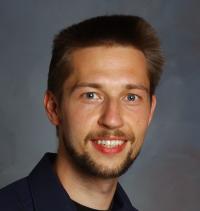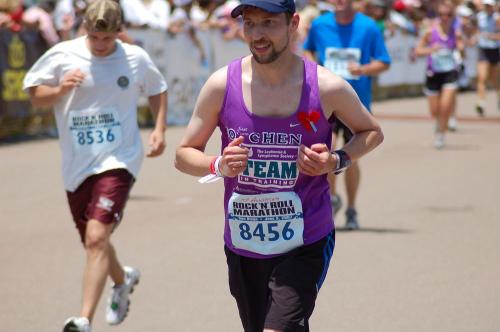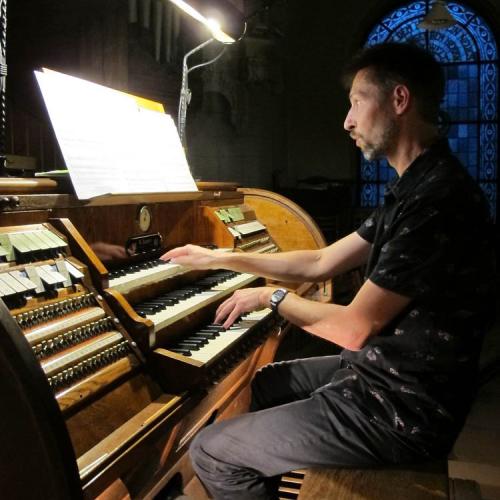Faculty Spotlight: Professor Jochen Ditterich, Ph.D.

Jochen Ditterich, Ph.D. is a Professor in the Department of Neurobiology, Physiology and Behavior in the College of Biological Sciences and a core member of the Center for Neuroscience. Since March of this year, he is also one of the Co-Directors of the Center for Neuroengineering and Medicine, after having served on its Steering Committee since the center’s inception.
What is your background?
My original background is in electrical engineering. As a teenager, I was always fascinated by electronic circuits and computers, and I wanted to learn how to design such devices. I got a Diploma (roughly equivalent to a Master’s degree) in Electrical Engineering from the Technical University of Munich, Germany, focusing on information processing. Munich has a long tradition in cybernetics, the use of engineering approaches to understanding biological systems. This gave me an opportunity to take courses in the area of visual and auditory information processing, and my interest shifted more and more from studying technical systems to understanding information processing in biological systems. When it was time to find a research project for writing my diploma thesis, I saw an announcement by a research group at the Center for Sensorimotor Research. They were looking for someone to develop software for the automatic analysis of eye movement recordings. I was fascinated by working with the teams at this Center and decided to stay there to get my PhD, which was on the mechanisms of learning in the oculomotor (eye movement) system.
When it was time to move on to a postdoc position, I wanted to (a) spend some time in a foreign country and (b) learn a completely new research technique. Since my work in Munich was based on psychophysical experiments with human subjects and computational modeling, which requires treating the brain as a black box that you cannot really look inside, I wanted to move to the other extreme, having very detailed access to what was going on inside the brain. I joined the laboratory of Dr. Mike Shadlen at the University of Washington, Seattle (now at Columbia University in New York) to work with a nonhuman primate model of decision-making. While these animals made perceptual decisions (decisions about visual stimuli), we could record activity from individual neurons in the brain, which provided detailed insight into how the brain solves the problem of converting sensory evidence into a discrete choice. Hypotheses about specific decision mechanisms could further be probed by artificially changing activity in the brain and studying the effect on decision behavior.
My original plan was to return to Europe after this postdoc, but I received an offer to join the faculty at UC Davis, which I did in 2004, and I am still here.
What led you to your current research areas?
After joining UC Davis, I continued the work on basic neural mechanisms of decision-making. A lot of the earlier work was focused on decisions between two alternatives, typically recording from one neuron at a time. We started asking what computational mechanisms would allow the brain to make decisions between multiple alternatives. We started recording from multiple neurons simultaneously, which allowed us to gain more direct insights into how the brain arrived at individual decisions, which also led to the observation of a neural correlate of changing one’s mind. In a collaboration with Dr. Michele Basso (at UCLA at the time) we also started investigating decision-making deficits in patient populations, such as those with Parkinson’s disease, asking what aspect of the decision-making process was impaired in these patients.
While investigating the questions how the brain is able to separate decision-relevant from irrelevant information and how it makes sure that the decision-relevant information selectively gets routed to the decision-making network, we encountered hypotheses like the theory of communication through coherence, which posits that the brain takes advantage of synchronized oscillatory activity to control the information flow. To critically test such an idea, one ideally wants to perform a causal experiment: manipulate neural activity and observe the functional consequences. In this case, the requirement is to change the timing of neural activity in one brain area relative to ongoing neural activity in another brain area. While researching the published solutions, we realized that they were neither particularly user-friendly nor very flexible in terms of what existing research equipment they could be used with. This prompted us to start the development of a new, user-friendly algorithm for closed-loop phase-locked stimulation and a flexible, general-purpose real-time implementation that could be shared with the research community, which was my entry into the field of neuroengineering.
In addition to developing new tools for basic neuroscience research, more recently we started working on new approaches that could also find translational applications. Deep Brain Stimulation (DBS) is already a quite successful treatment alternative for motor disorders (like Parkinson’s disease) and is currently being evaluated for psychiatric disorders like depression and Obsessive-Compulsive Disorder (OCD). Many neurological and psychiatric disorders come with cognitive deficits (problems with attention, decision-making, learning & memory, etc.), which tend to be difficult to treat pharmacologically. Could implantable stimulators make a difference? The operating principle of currently used electrical stimulators is basically that the stimulation ends up disrupting local information processing, similar to a lesion effect, and therefore ends up breaking up neural connections that are too strong for pathological reasons. When an engineer wants to control a technical system, for example have an autopilot fly an aircraft, their approach usually looks quite different: A mathematical model of the dynamics of the system is used to estimate its current state and to determine the input that needs to be applied to the system to correct its state, if it deviates from the desired state. In an ongoing collaboration with Dr. Zhaodan Kong (Department of Mechanical and Aerospace Engineering) we currently pursue the question whether a similar approach could be applied to the brain. Can we estimate suitable dynamic system models from observed neural activity and use these models to determine how the brain would have to be stimulated to correct the state of a cognitive system, and move it out of a disease-related state into a state that is closer to the normal operating regime?
What is your passion/motivation?
My primary motivation to become a scientist was certainly curiosity. How does a complex information processing system like the brain work? My hope is that a better understanding of how a healthy brain functions will also lead to better and more targeted treatment options for disorders of the nervous system. I will come back to this point when addressing the question what my vision for the future looks like.
I also believe that, to keep motivated, it is very important to have a life outside the lab that keeps you in balance. As a graduate student and postdoc, I regularly participated in long-distance runs and sprint triathlons. While I don’t work out as much anymore, taking care of our two dogs (including an Alusky, an active working dog) forces us to be out and about every day. My other passion is music. I play keyboard instruments of all kinds, used to write music for theater performances, and worked with different musicians/ensembles along the way. I still help out every now and then, when one of the local churches needs a substitute organist/pianist. I even built my own organ console, which allows me to practice pipe organ music at home.
What would you like to see the field achieve in the next 5-10 years? What is your dream?
Many modern medical treatments are precisely targeted interventions that are based on a solid understanding of how the underlying organ system functions. Neurology and psychiatry are significantly lagging in that respect. For example, many currently used pharmacological approaches have not been designed based on a solid understanding of a particular mechanism and how, precisely, it is disrupted, and the effect they have is usually pretty broad rather than precisely targeted. My hope for the future is that progress in basic neuroscience, i.e., a better understanding of how a healthy brain works, will allow a better mechanistic understanding of how brain processes are disrupted in neurological and psychiatric disorders, which, in turn, should allow the development of more precisely targeted interventions. I believe that technology-based interventions, like neuromodulation, open up new avenues, when other, more traditional treatment options hit a roadblock. I am convinced that we will see implantable stimulators, and perhaps also noninvasive stimulation approaches, find much broader applications than where they are being applied today.
Would you like to share some advice with students interested in neuroengineering?
Neuroengineering is an interdisciplinary field, where teamwork is essential, and researchers with very different backgrounds/training and speaking different “scientific languages” interact. This is what makes the field fascinating, but it also means that, over time, you need to acquire at least some basic knowledge in the different areas and, at least at a rudimentary level, understand and speak the different “languages”, the terminology used in the different disciplines. Certainly not all of this can be acquired through an initial, formal training. Rather, we need to keep learning as we are working in this field. Some skills are easier to acquire later on than others. What I would definitely recommend early on is a solid mathematical foundation and good computer/programming skills. I would consider these more difficult to acquire later on than some other skills.
Neuroengineering certainly is an exciting field to be in these days! Remain curious!


